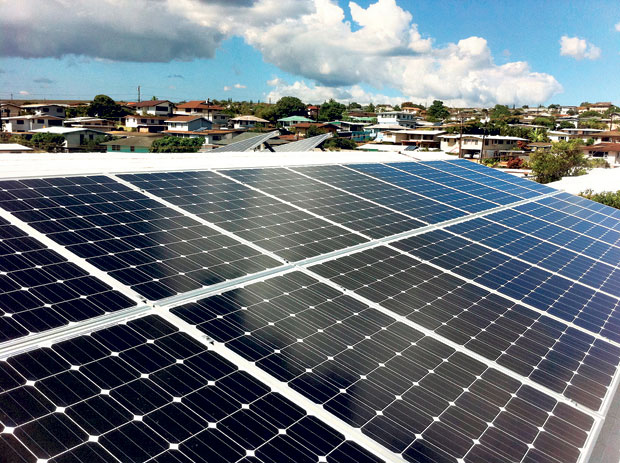Taking a Look at the Solar Industry’s Future in Hawaii
Administrative changes by the Hawaii Department of Taxation regarding the application of the state’s Renewable Energy Tax Credit will likely impact the solar industry. New limitations of the tax credit could chill photovoltaic (PV) sales after a torrid 4th quarter in 2012 as consumers sought to beat the Dec. 31 deadline.
The most visible change is the cap of $5,000 in tax credits per qualified PV system, per taxpayer, per year. In addition, a qualified “system” is defined as having a capacity of up to 5 kW. The credit itself can exceed this cap when the system size exceeds 5 kW.
The tax department contemplated these revisions to the tax code to restrict and/or reduce the credits in an effort to combat the state’s budgetary shortfall on tax revenues. However, it did not consider the revenue stream created by a robust solar industry — general excise taxes paid by employers and employees, allied trades and businesses (electricians, plumbers, roofers, carpenters, etc.) and “normal” income taxes.
These hastily-crafted changes are temporary in nature as the Hawaii State Legislature is considering a number of bills during the current session which will permanently define the tax credit issue. Politicians will be considering input and testimony from the solar industry as well as economists and other financial experts.

The state did have legitimate concerns about the manipulation of tax credits by certain unscrupulous PV contractors who sold high-priced systems on the basis that excessive tax credits could be claimed. If the department did not audit the taxpayer, he could conceivably “get away with it.” However, most of the solar companies ran their businesses “clean” and did not resort to such “shady” tactics.
Some buyers think that they can wait for prices to drop, pointing to the steep declines in electronics and computers. The same cannot be said of solar, as material and labor costs continue to rise.
Consumers contemplating PV systems in 2013 and beyond would be wise to consider this: Even without tax incentives, photovoltaic electrical systems are still attractive from a financial perspective. A $30,000 system (20 panels multiplied by 245 watts equals 4.9 kW) that saves $200 per month equals an 8 percent annual return ($2,400 savings divided by $30,000 cost equals 8 percent). The less competitively priced designs still return at least 5 percent annually — have you checked the rates on money-market funds or treasury bills lately? The more efficient and aggressively-priced systems can return nearly 10 percent.
The fact remains that even at reduced incentives, returns are extremely high. With the current federal credit of 30 percent ($9,000) and a $5,000 state cap, the return on the above example is $2,400 divided by $16,000, which equals 15 percent. There is nothing shabby about that kind of result.
Consumers who undertake action as quickly as possible benefit themselves by saving on their utility costs sooner than later. Consumers should definitely “pull the trigger” and “go green.”
Hi-Power Solar is a “full-service” contractor offering sales and service for solar water heaters as well as PV systems. Principals Ron Romero, with more than 20 years in the solar business, and Matt Adams, with more than 16 years, offer an excellent balance of top-notch components, expert installation and competitive pricing.
Be cautious in choosing the most appropriate solar system design and explore the financial costs impacting your pocketbook.
HI-POWER SOLAR
contact // 342-0802
web // www.hi-powersolar.com